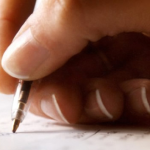Pilates may be a good way for you to get fit if you’re looking for exercises with less impact to protect your joints and your body. Here’s an article shared by San Diego Sports Physical Therapy all about Pilates.
The Pilates Method
By Kristen Schott, PT, MPT
Making the decision to become more physically fit is an easy choice to make. The tough part comes when deciding how to go about it, especially in a time where there are so many fitness programs available to us. One school of fitness that requires consideration is the Pilates Method. This fitness program, although gaining relatively new publicity, was created in the early 1900s by Joseph H Pilates. It is a renowned method of improving one’s muscle tone, flexibility, strength, posture, balance, and body-mind connection. Today, some of the basic principles and exercises of the Pilates method are used by many fitness experts and healthcare professionals, including physical therapists.
Historically, the Pilates method has helped athletes as well as injured individuals attain their fitness and rehabilitation goals. It can also be used as a preventive measure to gain postural awareness and core stability which can help reduce the risk of everyday repetitive strain injuries. Pilates is safe and appropriate for a variety of people of all fitness levels as it focuses on engaging the body’s central musculature around the spine, torso, hips, and shoulders. By focusing on these core muscle groups, individuals build a stable base or core from which progressively skilled upper and lower extremity movements are derived.
The Nine basic principles incorporated in every Pilates exercise:
Concentration: focus on the contraction of core muscles and be conscious of the body’s position in space or in relation to its environment.
Control: Maintain postures and positions- outside forces, such as gravity, should not influence or disrupt deliberate and slowly controlled movements.
Center: All Pilates exercises are initiated from proper central or core positioning about the spine and torso and then flow outward to coordinated movements of the extremities. A strong stable base is needed to effectively move the limbs repetitively without injury.
Fluidity: movements are slow and graceful as opposed to quick and jerky.
Precision: focus on obtaining accurate positions and movements.
Breath: utilize full inhalations and exhalations during exercise, never hold your breath while exercising; the body needs oxygen to nourish the tissues of the working neuromuscular system.
Imagination: use visualization or metaphors to enhance movements or to improve body’s response to the mind’s messages
Intuition: listen to your body- if a movement hurts, stop.
Integration: utilize the entire body, (central core and peripheral extremities), as well as the mind’s concentration and visualization to successfully complete an exercise.
Exercises:
These are a few basic mat exercises which target the core muscles of the spine, torso, hips and shoulders. These exercises do not represent the entire Pilates method, but are great for beginners.
Breathing:
Lie flat on back with knees bent, feet resting flat on floor, and arms at side or resting on lower abdomen. Pull torso muscles in and upward while exhaling. Place hands on lower abdomen just below navel and feel a mild abdominal contraction. Muscles of pelvic floor (used for bladder control) should also tighten. Release contraction on inhalation. Repeat breathing cycle 5-10 times.
Pelvic Bowl:
Lie flat on back with knees bent, feet resting flat on floor, and arms at side. Exhale and roll hips under drawing navel to floor and pelvis toward ceiling (keep back flat on floor). Inhale and reverse motion- pulling pelvis to floor and lifting navel toward ceiling. Repeat 5-10 times. Now try side to side- rotate one hip bone up toward ceiling, dropping other hip down toward mat. Imagine that the pelvis is a bowl filled with water sloshing back and forth. Repeat 5-10 times. Now try “swishing the water” in a circular motion, combining all movements. Repeat 5-10 times clockwise and counterclockwise. Return to rest position.
Cervical Nod/Chin Tuck:
Lie flat on back with knees bent, feet resting flat on mat, and arms at side. Using a small motion, “tuck” chin using the motion you would to look at your chest. Imagine a string is pulling from the top of your head to lengthen the vertebral bones of your neck.
Shoulder Flexion and “Angel Arms”:
Lie flat on back with knees bent, feet resting flat on mat, and arms at side. Pull shoulder blades down toward mat (scapula setting). Lift one arm up overhead, keeping opposite shoulder blade against the mat. Alternate arms. Repeat 5-10 times each side. Now try bringing arm out to side and up overhead while setting opposite scapula against the mat. Alternate arms. Repeat 5-10 times each side.





